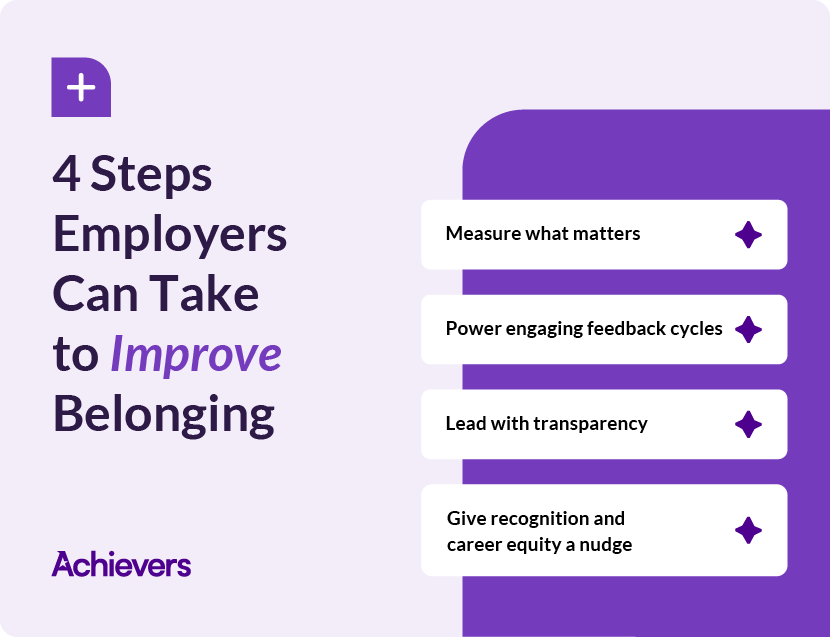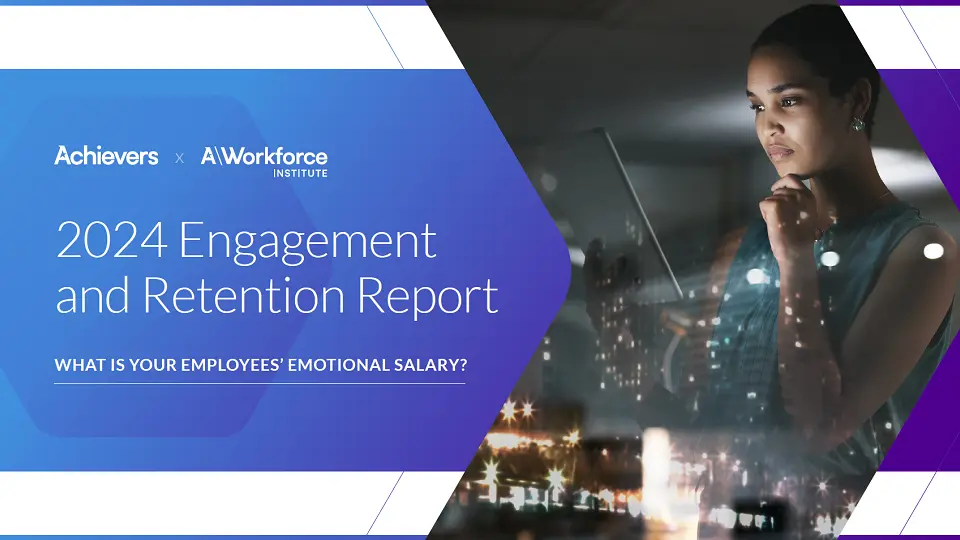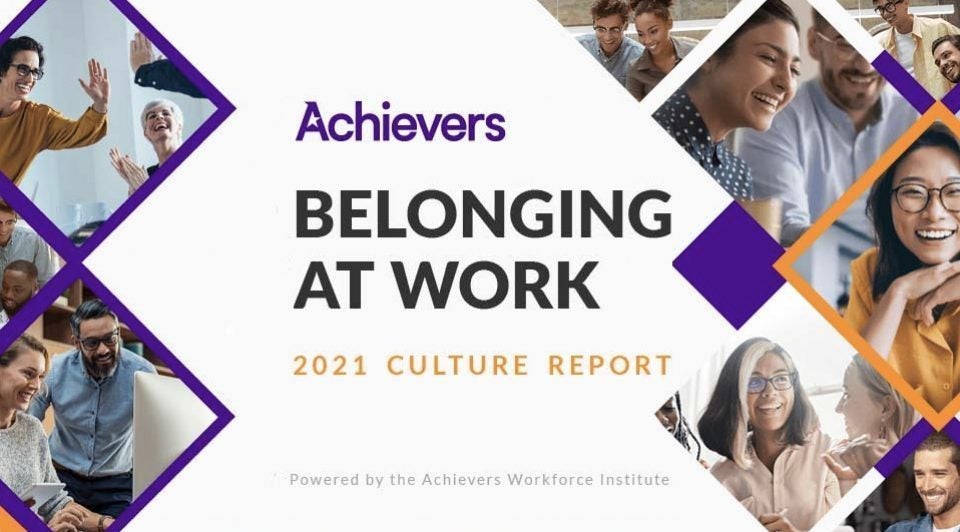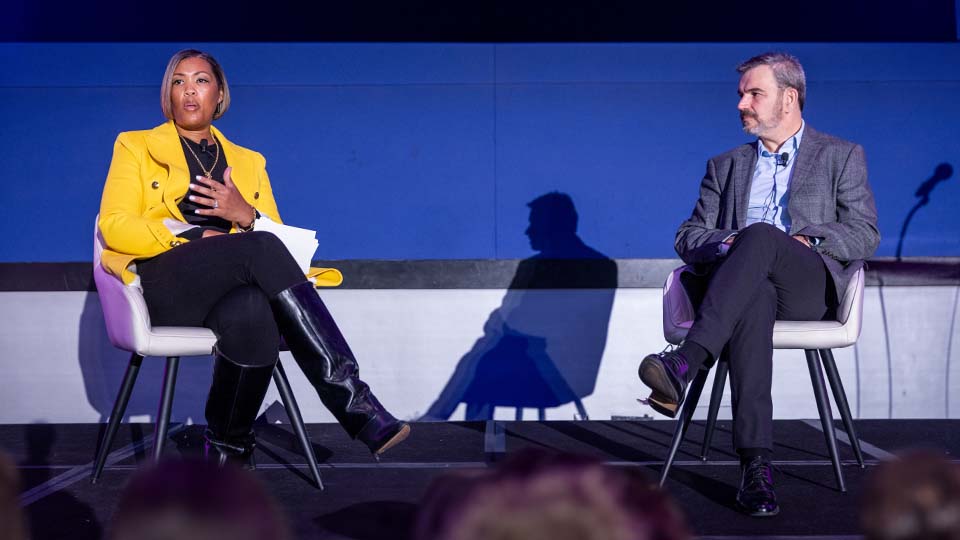Table of contents
Kumari Williams, VP of belonging and diversity at Workday, and Jeff Cates, CEO of Achievers, reveal the steps employers can take to keep employees motivated for the long haul.
Every HR leader grapples with retention challenges in today’s job market. While offering competitive pay is essential to mitigating turnover, it’s not the only thing that keeps employees engaged and committed to your organization. So, what will take your people programs to the next level and keep employees motivated for the long haul? Capitalizing on innovations between your Human Capital Management (HCM) and recognition platform promises to provide exponential outcomes. By aligning Recognition and Rewards (R&R) with other HR functions, such as feedback, people analytics, and DEI, your organization can harness a new superpower that boosts belonging rates and retains the best and brightest.
At From Day One’s Live 2024: Atlanta conference, Jeff Cates, CEO of Achievers, and Kumari Williams, VP of belonging and diversity at Workday, revealed four steps employers can take to get started:
- Measure what matters
- Give recognition and career equity a nudge
- Power engaging feedback cycles
- Lead with transparency
Sizing up belonging’s key benefits
Belonging at work is a critical driver of employee engagement and productivity. According to Achievers Workforce Institute (AWI), people with a strong sense of belonging are significantly more likely to be engaged in their role and twice as likely to be productive, resilient, committed to their company, satisfied with their job, and enthusiastic about their role. At Achievers, we define belonging as an experience of connection, security, and community – feeling at home in one’s place without reservation.
“Individuals that report a sense of belonging at an organization are two times more likely to say that ‘I feel I can have a career at this organization,’ and that’s the difference between, ‘I work at an organization,’ versus, ‘I have a career at an organization,'” said Jeff Cates.
However, belonging is not just a buzzword or a fad. It needs to be integrated into the day-to-day work structure, aligned with the company’s values, and followed up with meaningful action. Prioritize key areas that significantly impact the pillars of belonging, including recognition, feedback, manager effectiveness, and culture alignment.

1. Measure what matters
As Workday fosters a sense of belonging in the workplace, knowing how it can be measured is paramount.
“For us, belonging is an output,” Kumari Williams said. “As we are building inclusive spaces. As we are building inclusive leaders, feeling connected and feeling valued and that sense of belonging is an output of inclusivity for us, and so we do lean into it quite heavily. It’s even a KPI for our organization, and at the highest level of our organization, we are focused on increasing belonging, not just maintaining it.”
A good place to start measuring belonging is to measure what matters for employee belonging rates. Williams and Cates identify two factors as critical belonging levers: career equity and recognition equity. Employees who feel meaningfully recognized at work are more than twice as likely to have a strong sense of belonging.
However, to build a culture of belonging, look beyond how you recognize employees at the individual level and assess where overall recognition rates stand at your organization today, then identify areas for improvement.
Recognition can only work its magic when it’s frequent and meaningful. To achieve this, aim for at least one monthly recognition for every employee. A comprehensive recognition platform makes this easy while offering a comprehensive reward marketplace, integrations that support flow-of-work recognition and complement other HR functions, and turnkey resources for running campaigns to increase usage and impact.
2. Give recognition and career equity a nudge
Ensuring and measuring recognition companywide is essential, but it’s also critical that your organization can measure any recognition inequities present in specific segments of your employee population. These R&R disparities should be incorporated in your HCM toolkit. Luckily, AI-driven nudging makes this seamless – even if you don’t have a massive budget for monetary recognition.
“How are you thinking about the behavior-driver tools you have at your organization, and guiding them toward your people practices to really make an impact?” Cates asks.
Employee nudging is a tool that helps leaders use their time and technology more effectively. It provides real-time coaching by recognizing trends and offering actionable suggestions, which can foster a culture of belonging, recognition, equity, and inclusion in the workplace.
AWI finds that women are 39% more likely than men to say they never receive monetary recognition. Therefore, employers should use technology to nudge managers or HR leaders to help close that equity gap and spotlight those who have yet to receive recognition or receive it less often. Companies can also leverage the power of people analytics, feedback tools, and frequent manager check-ins to ensure they catch other inequities in their promotion rates, employee wellbeing, and more. Companies that do will see retention rates skyrocket.
“Individuals that report a feeling of career equity are two times more likely to not job hunt,” Jeff Cates said.
3. Enrich feedback cycles for more holistic performance reviews
Another way R&R proves to be the ultimate secret when you tap it into your HCM platform is through engaging, up-to-date, highly accurate feedback processes. Recognition tools allow managers and teammates to easily celebrate achievements big and small, but pulling recognition data into an HCM platform allows people leaders to glean relevant insights on every recognition their employees have received over time.
“How many people have heard ‘My manager wrote a performance review that covered what he thought of in the last three weeks’? Managers have had to run performance in a vacuum,” says Jeff Cates. Luckily, he suggests a fix to this age-old performance review struggle. “We can pull the recognition data into your HCM, and it gives that longitudinal look at ‘the last six months of all the things an employee was recognized for.” Cates says this creates a performance review where managers look beyond their own lens of the individual and are empowered to think broadly about all the employee’s contributions.
This capability provides more accurate annual performance reviews because it mitigates recency biases by providing a more holistic story of a worker’s career path by accounting for all the feedback a worker received over the last year – from many managers and teammates. Then, the employee’s manager can leverage these relevant insights to propel an employee’s performance further with recognition. Coupled with belonging, this is a powerful way to meaningfully address attrition.
4. Lead with transparency
After your organization determines how best to leverage R&R with your HCM platform to cultivate a sense of belonging, managers on every level of the organization must be transparent about how these changes will be implemented and why. Transparent communication ensures alignment between your organization’s goals and employee expectations, leading to a more connected, cohesive, and collaborative work environment.
“People can get behind it if they understand it,” Williams said, “and what we (at Workday) have been doing is focusing on being far more transparent, and it’s a multi-tiered journey for us.”
Additionally, transparency promotes accountability, allowing for open dialogue and feedback and enabling your organization to address any concerns or gaps in its strategies effectively. This, in turn, fosters trust among employees, as they feel included in the decision-making process and understand the rationale behind implemented initiatives.
The “why” of investing in belonging
Ultimately, while competitive wages are important, HR leaders have many other tools at their disposal to retain top talent; they just may be letting powerful features lie dormant in their tech stack. By creating an airtight partnership between HCM and R&R, organizations add an invaluable new superpower to their toolkit that cultivates a loyal, engaged, and empowered workforce poised for long-term success.




